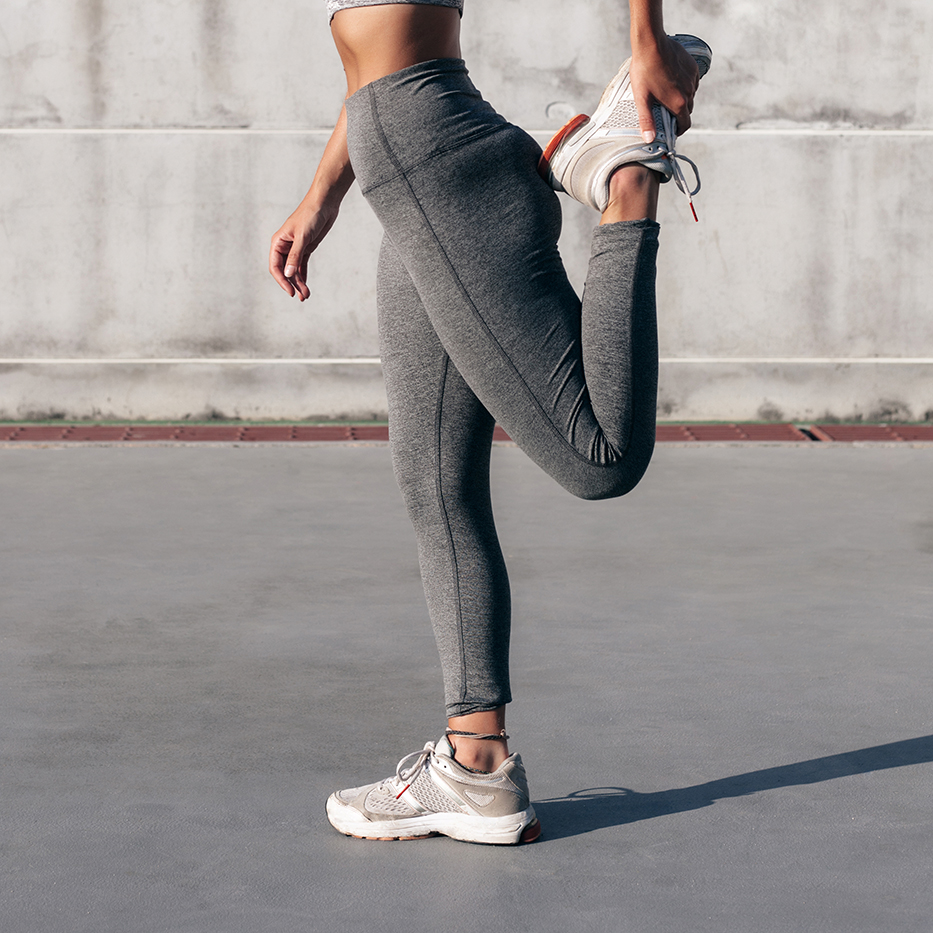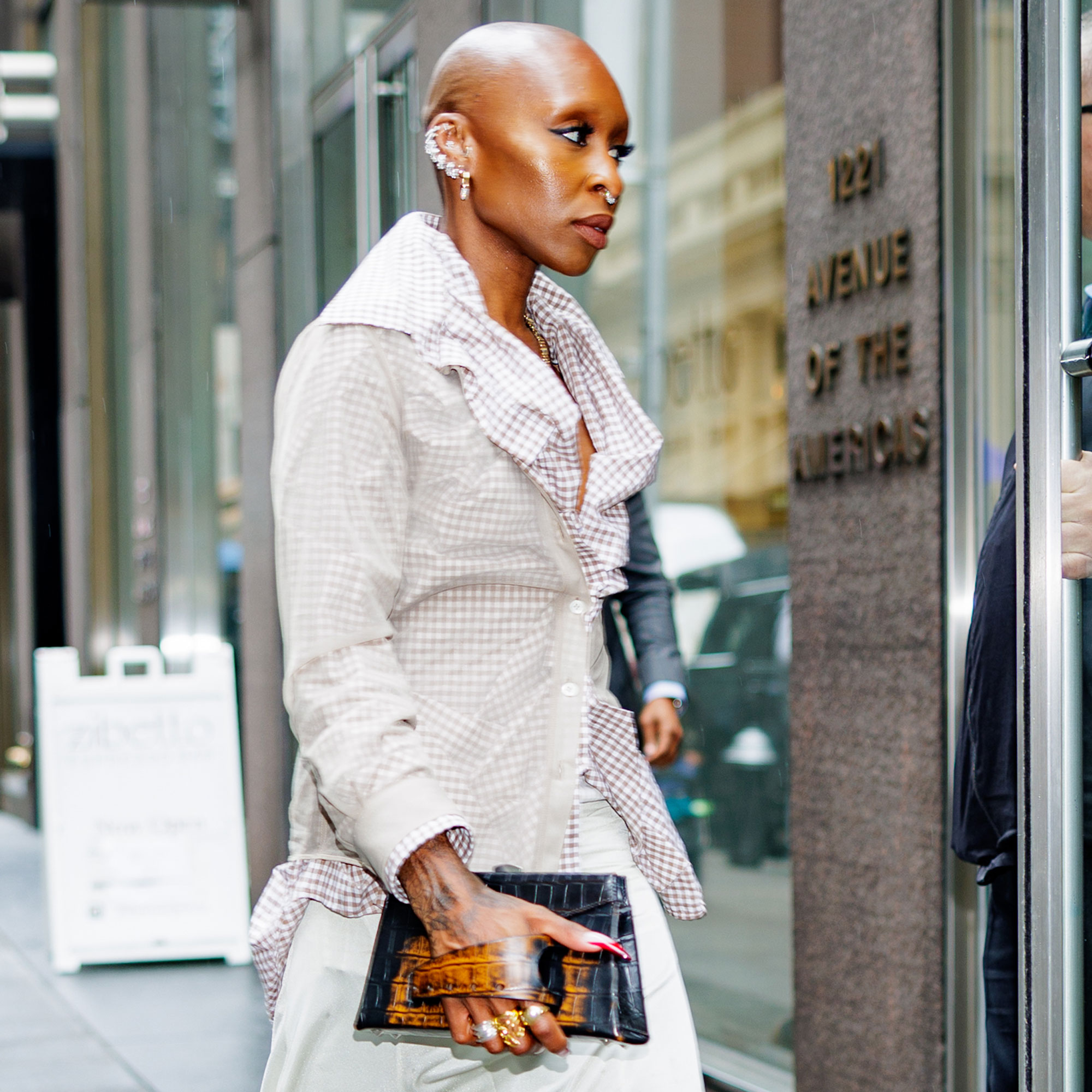My Thighs Are the New Thigh Gap


During yoga last summer, the instructor kicked off the class by directing the group to stand tall in mountain pose. “Feet together, hands at your heart center,” she said. “Close your eyes, and listen to your body. What do you want from this practice?”
I didn’t close my eyes. Instead, I stared at my reflection in the mirror, trying to subtly arch my back in a way that would separate my thighs. It was a trick I picked up while in the depths of my eating disorder—adjusting my posture to better highlight the ever-covetable thigh gap. And while these days, I’m much more at peace with my much healthier (and much stronger) physique, some habits die hard. I’ve found yoga to be immensely helpful, as there’s no better way to work through your issues than by quite literally putting yourself in physically compromising positions.
In those beautiful seconds, your priorities change. There’s no room for doubts or bullshit or toxic thoughts, only breath and focus. It’s practice for real life, the letting go. But those first few minutes of class—the minutes before I remember exactly what my body is capable of—are often when I find myself at my most vulnerable. That unsureness is reflected back to me, amplified by the surrounding mirrors. So I arch my back and shift my weight, silently judging my thighs.
What did I want from this practice? I finally closed my eyes, sighed deeply, and silently repeated my usual mantra: acceptance.
Coincidentally enough, I was browsing my news feeds the next morning when my gaze landed on a headline. “Mermaid Thighs Are the New Thigh Gap,” it crowed. The story detailed the latest body-positive message to sweep Instagram: Women are posting photos of their thighs touching with the hashtag #mermaidthighs, in effect giving the proverbial finger to the gap. But while it warms my heart to see all this self-love go viral—especially as I thought back to the discomfort of my thighs touching in yoga the previous evening—it also made me take pause.
If body positivity is about unconditional acceptance—if the goal is to stop scrutinizing a few lousy millimeters of flesh in between our legs—then why are we using touching thighs as the morally superior retort to the thigh gap? Moreover, why do so many of the mermaid-thigh headlines refer to it as a body-positive trend? Why, pray tell, are we calling it “the new thigh gap”? Can my own thighs, in all their fluctuating size and strength, just be the new thigh gap—forever? And yours too? And everyone else’s?
Two summers ago, I watched Simone Biles’s beautifully muscled thighs vault her into Olympic history. On the flip side, I saw Kenyan marathoner Jemima Sumgong’s decidedly slimmer legs carry her to victory as well. No one questions the variation in their physiques; to do so would be irrelevant and frankly a little insulting. Instead, we celebrate their bodies as remarkable vessels of strength, focus, and commitment. But here’s the thing—why do we hold ourselves to such an entirely different standard? All of our bodies are remarkable. We all house such incredible strength, resilience, and potential. The only difference is that we don’t all hone and channel these qualities into the specific purpose of achieving Olympic gold.

For most of us, the aim is for our bodies to carry us through the many obstacles and unexpected turns of life—something that deserves the utmost celebration yet has seemingly become secondary to this global celebration of athletic prowess, as enjoyable as it is to watch. Instead, we section off our bodies and squabble over the bits and pieces, pitting what one population sees as aesthetically pleasing against what another thinks is morally better. Ultimately, we’re just offering up our bodies to society, weighing the opinions of the masses. And by giving up ownership of the one thing that is most profoundly our own, we thus leave ourselves painfully vulnerable to perpetual dissatisfaction. Even with time and self-love, these wounds are the most difficult to heal.
But there is a way out. In yoga last night, my own thighs held strong and steady as I maneuvered into poses that have always proven tricky to me, balancing the weight of my entire body, impervious and resilient to the years of harsh words, angry tears, and unveiled abuse I’ve stacked against them. And in spite of the self-criticism that followed me into my practice, I closed it by giving my legs a tight squeeze, grateful for their strength even when my mind struggles to fall in line. They did exactly what they were supposed to do. Their size and the way they touch had nothing to do with it. I remember my word, my mantra: acceptance. For once, it tastes less hollow, less hopeless. For once, I feel as though I'm beginning to understand what it means.
Want to dive deeper into the complicated issue of body image? Check out our (very) honest discussion about dieting.
This post was originally published at an earlier date and since been updated.
This article is provided for informational purposes only and is not intended to be used in the place of advice of your physician or other medical professionals. You should always consult with your doctor or healthcare provider first with any health-related questions.


